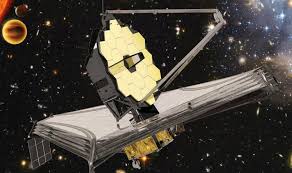
Micrometeoroids are tiny, fast-moving particles in space that pose a significant threat to spacecraft, satellites, and astronauts. Despite their small size, their high velocities can cause substantial damage. This article explores micrometeoroid impacts, their effects, and mitigation strategies to protect space missions.
What Are Micrometeoroids?
Micrometeoroids are space debris smaller than a grain of sand, typically measuring less than a millimeter in diameter. They are remnants of comets, asteroids, and interplanetary dust that orbit the sun. These particles can be found throughout the solar system and are continuously falling toward Earth and other planets.Composition: Micrometeoroids are composed primarily of silicates, metals, and carbon compounds. They originate from natural cosmic processes, unlike space debris generated by human activity.Velocities: These tiny particles travel at extremely high speeds, ranging from 10 to 70 kilometers per second. Even a small object moving at such velocities can deliver significant kinetic energy upon impact.
Sources of Micrometeoroids
Micrometeoroids come from several key sources:Comets: As comets approach the Sun, they shed ice, dust, and rocky material. This debris is left behind in their wake, contributing to micrometeoroid populations.Asteroids: Collisions between asteroids create fragments that become micrometeoroids.Interplanetary Dust: This fine dust exists throughout the solar system and can become micrometeoroids through various gravitational and thermal processes.
Impact of Micrometeoroids on Spacecraft
Though small, micrometeoroids can cause severe damage to spacecraft due to their high velocities. The impacts can range from minor surface abrasions to critical failures in spacecraft systems.Physical Damage: The energy from micrometeoroid impacts can puncture spacecraft walls, damage solar panels, and degrade thermal insulation.
Electronic Interference: Micrometeoroid impacts can generate plasma, which may cause electrical short circuits or other disruptions in a spacecraft’s systems.Threat to Astronauts: For astronauts on spacewalks, even tiny micrometeoroid impacts can pose serious risks, potentially puncturing spacesuits or causing injury.
Impact on Satellites and Space Stations
Satellites and space stations are constantly exposed to the threat of micrometeoroid impacts. Over time, this can degrade their functionality, reduce their lifespan, or even cause catastrophic failures.Degradation of Solar Panels: Micrometeoroid strikes can chip away at the protective coating on solar panels, reducing their efficiency over time.Hull Penetration: Large micrometeoroids can penetrate the hull of space stations, creating leaks or exposing the interior to vacuum conditions.Communication Disruptions: If micrometeoroids damage antennae or other communication equipment, it can interrupt vital communication between spacecraft and ground control.
Earth’s Defense: The Atmosphere
Earth’s atmosphere serves as a natural shield against micrometeoroids. Most particles burn up upon entry, creating visible meteors (shooting stars). However, spacecraft in low-Earth orbit, such as the International Space Station (ISS), are outside most of this protection and remain vulnerable to micrometeoroid impacts.
Tracking and Monitoring Micrometeoroids
To mitigate the risks posed by micrometeoroids, space agencies have developed systems to monitor and predict micrometeoroid streams.NASA’s Meteoroid Environment Office (MEO): NASA’s MEO tracks micrometeoroid populations and provides data to spacecraft engineers for mission planning.Debris Tracking Systems: Satellites equipped with sensors can detect micrometeoroids in space, helping to predict areas of high impact risk.Shielding Materials Testing: Engineers test spacecraft shielding materials against simulated micrometeoroid impacts to ensure they can withstand the damage.
Mitigation Strategies for Space Missions
Spacecraft designers employ several strategies to protect against micrometeoroid impacts:Whipple Shields: Named after Dr. Fred Whipple, these shields consist of multiple layers of thin metal. The outermost layer vaporizes the micrometeoroid upon impact, while the inner layers absorb the remaining debris and energy.Redundancy in Critical Systems: To ensure spacecraft survival, critical systems are often duplicated. If one system is damaged by an impact, a backup can take over.Avoiding Known Micrometeoroid Streams: Space agencies plan missions to avoid known areas with high concentrations of micrometeoroid activity, such as the tails of comets.
Notable Micrometeoroid Incidents
Throughout the history of space exploration, there have been several notable micrometeoroid incidents:Apollo Missions: The Apollo spacecraft suffered minor micrometeoroid impacts, but the damage did not threaten mission success.International Space Station (ISS): The ISS regularly experiences micrometeoroid strikes, and its windows and solar panels are frequently inspected for damage.Hubble Space Telescope: The Hubble Telescope has been struck by micrometeoroids multiple times, leading to small surface damage that slightly degrades its imaging capabilities.9. Future Risks and AdvancementsAs space exploration expands, the risk posed by micrometeoroids becomes more significant. With missions planned to the Moon, Mars, and beyond, new strategies will be necessary to protect spacecraft and astronauts.Lunar and Martian Missions: The Moon and Mars lack significant atmospheres to protect against micrometeoroid impacts, so spacecraft and habitats on these bodies will need enhanced shielding.Advancements in Materials Science: Ongoing research into stronger, lighter materials is aimed at developing better shielding to protect future spacecraft from micrometeoroids.
Micrometeoroid impacts, though small, represent a serious challenge for space missions. As space exploration continues, understanding and mitigating the risks of micrometeoroid impacts will be critical to ensuring the safety of spacecraft, astronauts, and future space endeavors. Through advancements in technology, tracking systems, and shielding, space agencies can better prepare for and reduce the risks associated with these high-speed space particles.
Subscribe to Follow Global Trends for daily global news.
Find Out How To Make Money As A Full Time Writer/Blogger Guide.
To Advertise, Advertise Your Affiliate Links on FollowGlobalTrends.com for Just $1 Per Link Per Month!
Related Articles
Growing mushroom houses
Moon habitat
Mycelium construction
Lunar architecture
Sustainable building materials
Space habitation
Fungal growth
Myco-architecture
Extraterrestrial construction
Lunar environment
Renewable resources
Self-repairing materials
Space exploration
Written By: Enyoghasi Ngozi pricillia

